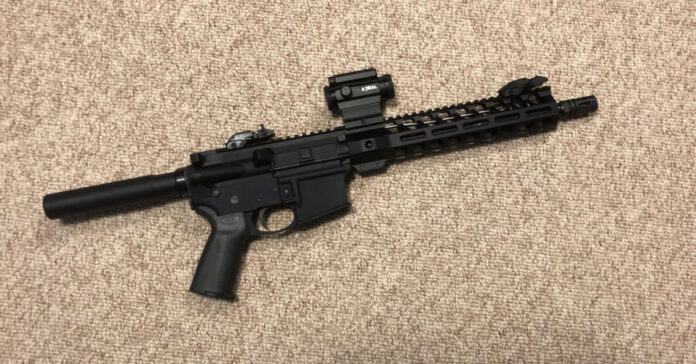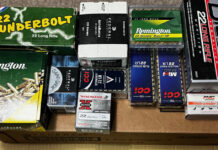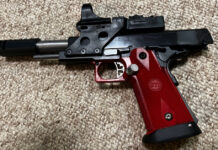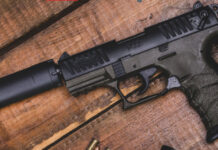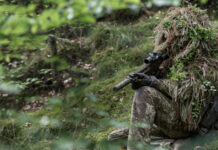When the BATF announced their changed regulations relating to pistol braces, I was pretty positive the courts would overturn it.
I’m still pretty positive, but I now concede that it will take years to fight its way up the lower courts to end up in the Supreme Court.
On Tuesday, the Fifth Circuit granted an injunction against the brace rule, but only for the plaintiffs. It does not stop the rule from going into effect for the rest of us. Nonetheless, an injunction is an excellent sign that the plaintiffs will prevail on the merits; we just have to give it time to wend its way through the court system.
Sadly, time is running out. In case you have been hiding under a rock, on June 1, ownership of an AR pistol or other pistol with an attached stabilizing brace will make you a felon, according to the ATF.
What Now?
I am faced the question of what to do with my AR pistols. Do I remove the pistol braces? Do I submit them to the ATF on a Form 1 and get the “free” tax stamp and have them forever be a part of the National Firearms Act registry? Or do I submit one and keep one without the brace?
I’ve gone back and forth, but earlier in May, I decided to register my .300 Blackout AR pistol as an SBR. I picked this gun because that is the cartridge that is optimized for a short barrel.
I don’t see a downside in my case. After all, I already have one NFA item, so I am in the ATF’s NFA database. I also have a gun trust, and I did the paperwork necessary to transfer my pistols to the trust prior to the publication of the rule.
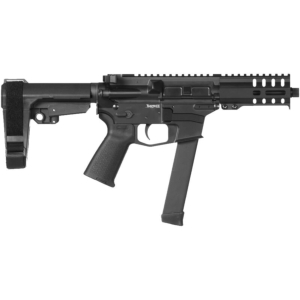
I also have been buying guns for at least 30 years, and I know darn well some of those dealers have gone out of business and turned their records over to the ATF. The ATF may not know all the guns I own, but they certainly know I own guns. I don’t think I am harming myself or putting myself in legal jeopardy by registering an AR pistol as an SBR.
The blackout is gun 1. For the 5.56 pistol I built last year, I never added a brace, so it remains a legal AR pistol.
For my CMMG Banshee, I decided to buy a CMMG rifle conversion kit, which replaces the current 5” barrel with a 16.1” barrel and a longer handguard. Instead of having a handy 9mm AR pistol, I’ll have a slightly less handy 9mm carbine. Since pistol caliber carbines are popular, that’s not a terrible thing, and it preserves part of my investment.
Fingerprints
To submit my registration for the .300 blackout, I watched a few videos on how to submit the electronic file, which includes electronic fingerprints and photos of me and photos of the guns, including close-ups showing the serial number and any other engravings or markings.
My fingerprints and photo are already on file at the ATF, but I have to submit new ones. According to my online research, local law enforcement offices should be able to help me out, so I visited the county sheriff’s office. The fellow at the front desk had no idea what I was talking about, so he pokes her head in a door to get someone to help me. Turns out to be the Sheriff himself! (Small town living is great.) We chat for a while, and he says he knows what to do to get fingerprints if I wanted an FFL, but not for a form 1. He suggests I come back with documentation telling them what type of fingerprints format I need and they’ll help me out.
I go home and do some more research and print out the instructions directly from the ATF website. Turns out they want a standard FBI fingerprint card, but I want the electronic version because it will make filing my form faster and I should get the results back quicker.
A few days later, I’m out and about and I go to the police station in a local town and ask them if they can help me get a fingerprint file. The officer who comes to the window in the reception area scratches his head, asks me to wait, and comes back in a few minutes to tell me they do not know what fingerprint format to use. “Do you know where the County Sheriff’s headquarters is?” he asks. “The might know.” Instead of laughing, I thank him.
I go back to the Sheriff’s office. The front desk officer remembers me and we have a friendly chat, but the Sheriff isn’t in. I leave the instructions with the deputy, and he promises to have someone call me back.
My Take
Everyone I talked to was not only polite, but friendly, and acted like they wanted to help me. If I wanted the printed fingerprint cards, I could have walked out of there with them. No one said anything like, “What do you want a short-barreled rifle for?” No negative vibes from either the Sheriff or the police department.
I got the distinct impression that I was the first person who had come in there and asked for fingerprints pursuant to submitting eForm1 paperwork. This leads me to believe that either no one around here has any AR pistols (yeah, right) or they refuse to register them (ding, ding, ding!). This is a region of the country that has little fondness for the federal government and even less for the ATF. After all, you can still buy moonshine in a mason jar in my neck of the woods.
This kind of apparent mass-refusal to comply makes me want to re-think my registration plans.
A Call Back
Two days after my visit, the deputy at the front desk called me back. He said they asked their ATF representative, and he told them to direct me to a kiosk that can provide the fingerprint file and photograph. He passed along the location of two kiosks and told me where I could find more online.
The closest one is about an hour away, but that’s the price we pay for living in the middle of nowhere.
As fate would have it, I was scheduled to drive an elderly neighbor to a doctor’s appointment in the city the next week, and we drove right by the highway exit for the gun store with the kiosk. On the way home after his appointment, I stopped in. Two guys greeted me. I expected I would disappoint them when I tell them I am just there to use the kiosk, but that wasn’t the case, possibly because they charge me $40 for the privilege.
One of them comes out from the counter to help me get started. He advises me to wash my hands and use their special lotion before doing the fingerprints. Once I’m under way, he backs off and then checks back when I am going from section to section to see if I have questions and to make sure I scan my driver’s license correctly. He’s obviously done this before, and I expect I got out of there twice as fast with his help as I would without it. He even takes my picture and shows me how to access the data on the website.
Privacy Concerns
My biggest concern about this process is not that the ATF will get this information—they already have it. My concern is that electronic data is far easier to steal than data in a locked file cabinet in a secure room in a building with guards and access control.
For example, someone could hack the kiosk system. More likely, some ATF employee could copy or download the list and give it to anti-gunners or sell it. We know the IRS, FBI, CIA, and other agencies have leaks; why would the ATF be any different?
Then again, when I bought my suppressor, I filled that information out on the seller’s website. I expect my data is no more or less secure than the data from the kiosk. Like Scott McNeally, the co-founder of Sun Microsystems once said, “You have no privacy anyway… Get over it!” So I got over it.
Next Steps
I haven’t sent in the paperwork yet. I think I will wait until this weekend. (There are still two court cases out there that might derail this rule.)
I also haven’t installed my conversion kit for the Banshee. I think I will hold off on that until May 30. That shouldn’t take more than 20 minutes once I dig out my torque wrench.
Speaking of barrels, it’s interesting to hear the ATF say you can replace the upper with a longer one, but it doesn’t say you have to destroy the old upper. The ATF also doesn’t say you can comply by removing the short-barreled upper. You can remove the arm brace and be in compliance; why not remove the upper? Can a device without a barrel be a short-barreled rifle? From what I can see, nowhere does it say you cannot own an AR lower with a pistol brace. As long as I have a full size upper, there should be no problem, whether or not I attach it. Funny how no one talks about that.
Final Result
By June 1, I will have a .300 Blackout SBR submitted to the ATF and in the process of being added to the NFA register, an expensive 9mm carbine, and a 5.56 AR pistol, all of which will be legal under the current regime.
Whatever you decided to do, you’ve got a week to either bring your pistols with braces into compliance or to make a willful decision to not comply with what is most likely an unconstitutional rule and an example of overreach by a federal agency. I’m not suggesting you comply or not, but I encourage you to make a willful decision rather than ignore the issue.

